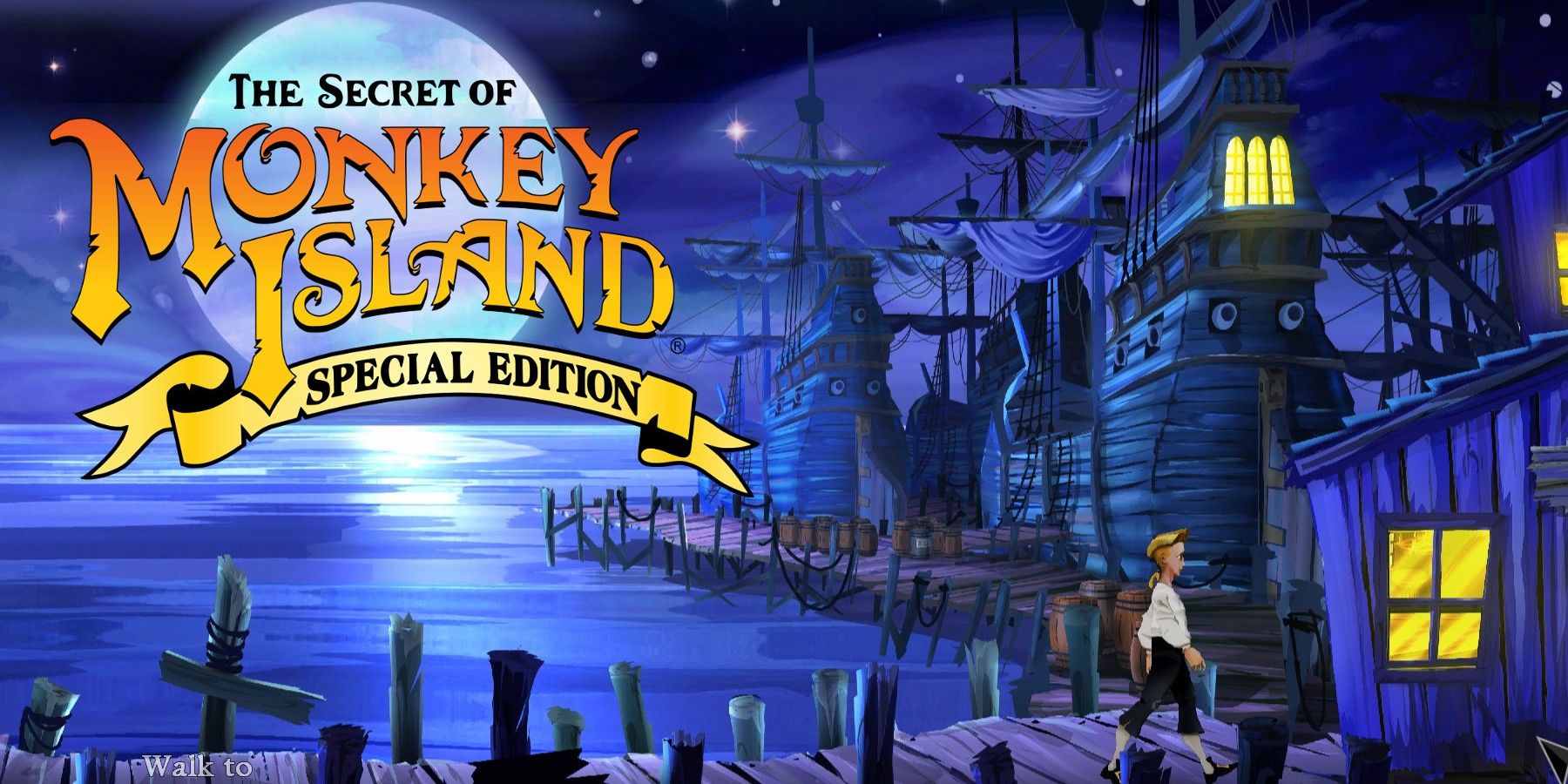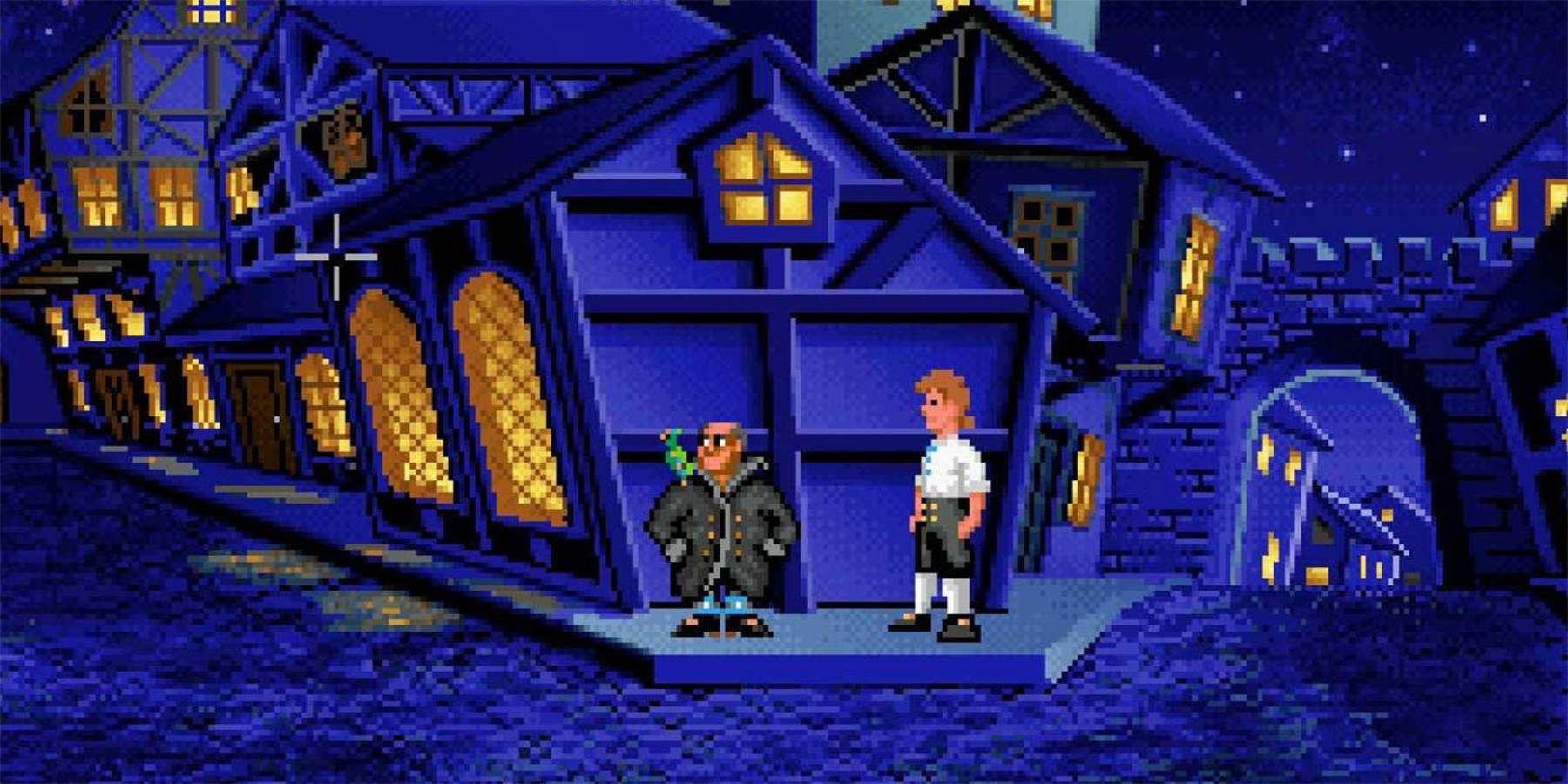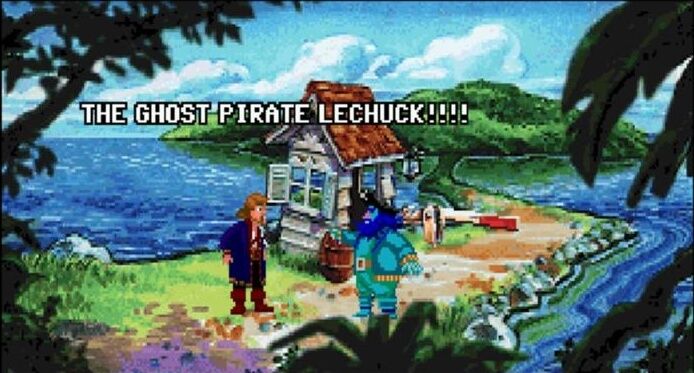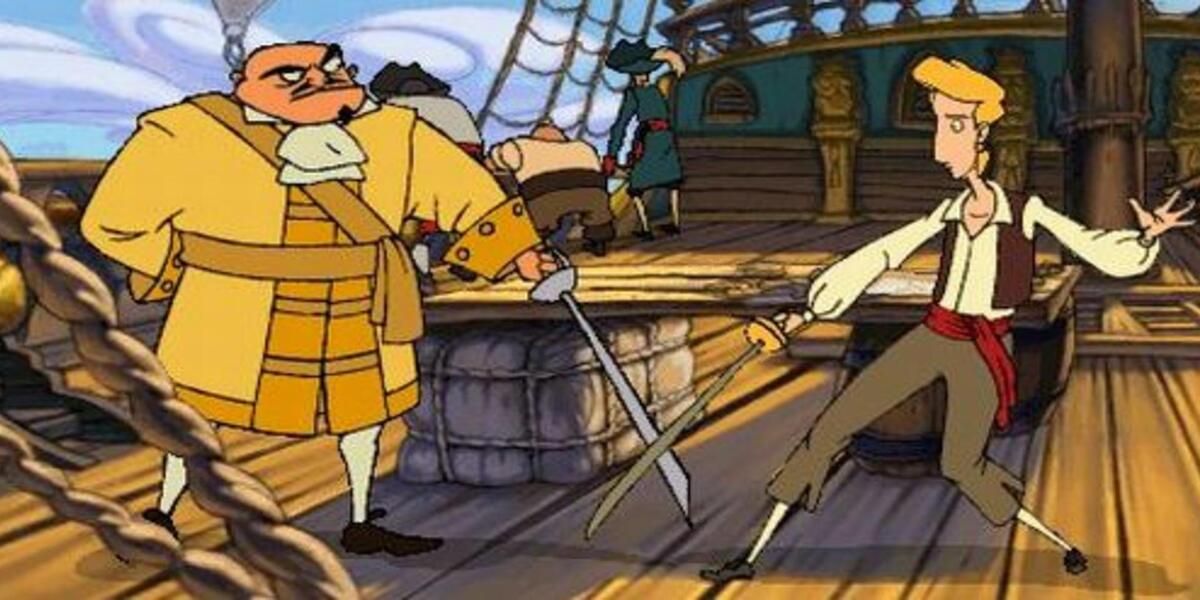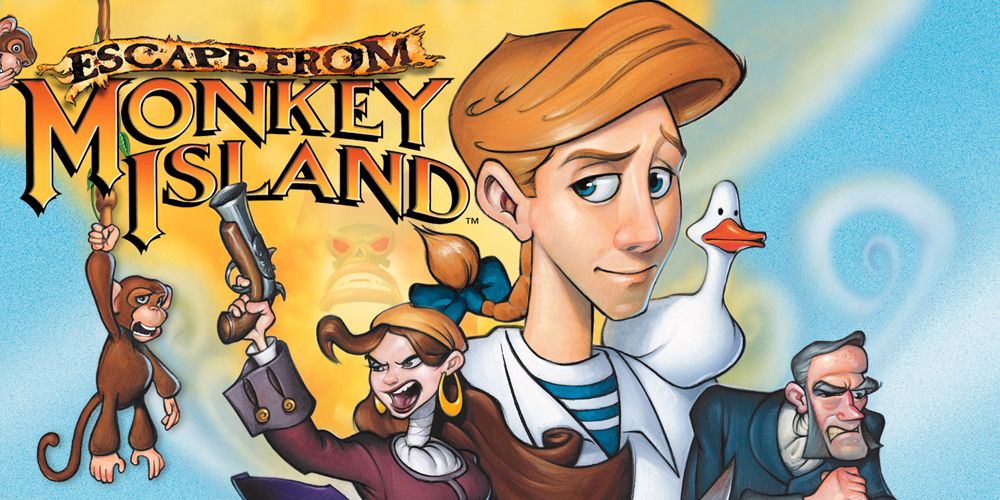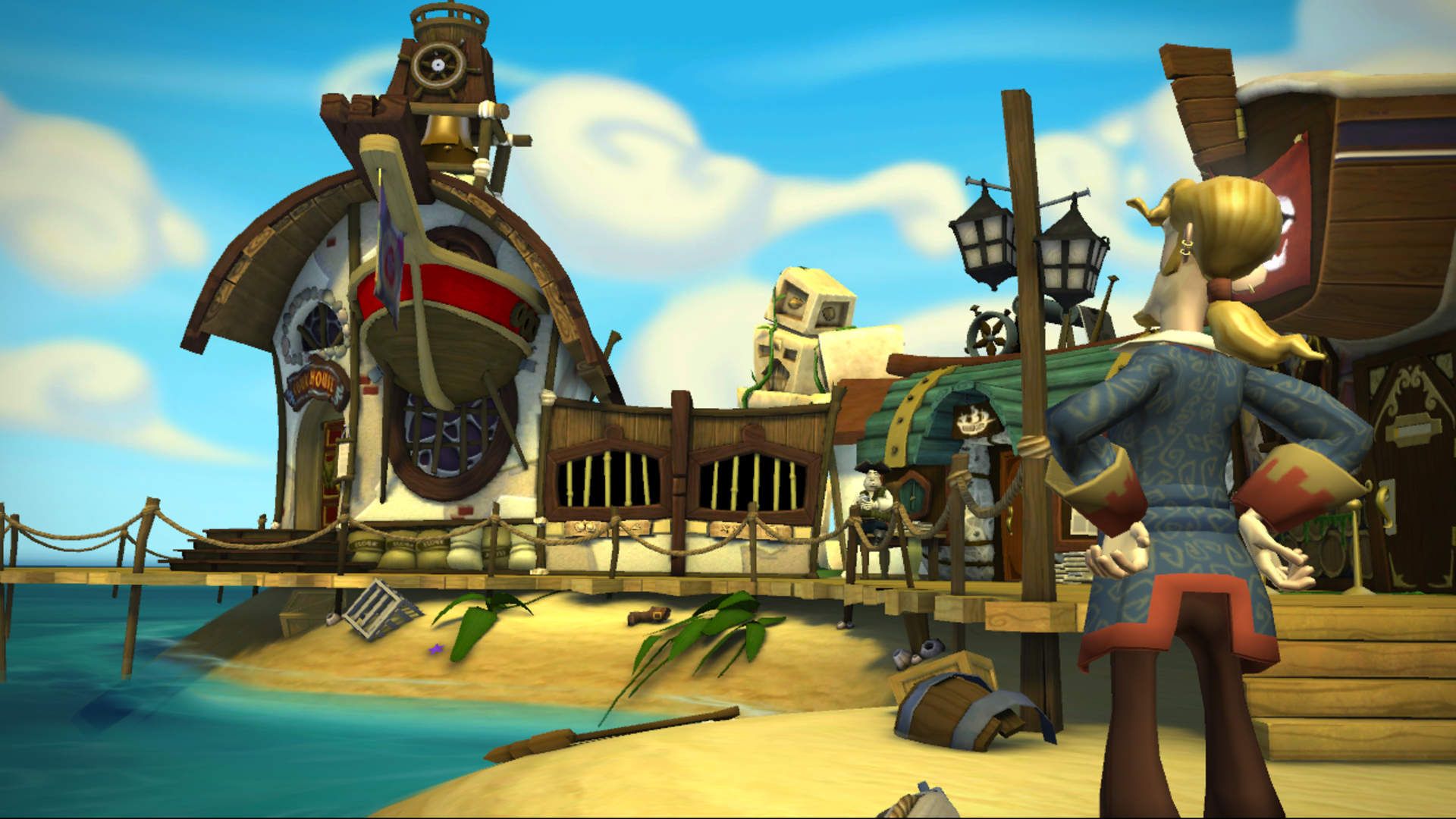The dawn of PC gaming brought with it a few distinct genres. First-person shooters got their start with titles like Wolfenstein 3D and Doom, the sports genre can be traced all the way back to Pong, and the adventure genre began its life as simple text-based games. Based on "Choose Your Own Adventure" books, these text-based titles soon evolved into graphic adventures, complete with visuals and sound. Although it wasn't the first, LucasArts' Monkey Island series would go a long way in evolving the adventure game genre.
With the recent announcement that the Monkey Island series is receiving another entry from the original creator, Ron Gilbert, it seems only fitting to look back on how much the series has evolved over the years. From its fairly basic, but groundbreaking roots, to its now-legendary status, Monkey Island has become a staple of the adventure genre, and one of the most important game series of all time.
Evolving the Adventure Game Genre with The Secret of Monkey Island
Widely considered to be the first adventure game ever made, Colossal Cave Adventure released in 1976, and was an extremely simplistic text-based game. Players are tasked with exploring a cave using one or two-word inputs, find some treasure, and leave. Though quaint by today's standards, Colossal Cave Adventure is one of the most influential games of all time, and gave the adventure genre its foundation.
10 years later, LucasArts began its career in the video game industry. Taking the groundwork of Colossal Cave Adventure, and many others that followed, LucasArts created its first graphic adventure, Labyrinth, based on the David Bowie-led cult classic. Though its graphics were fairly barebones, the gameplay showed promise, with an innovative "word wheel" being used to select commands, as opposed to other adventure games where the player had to simply guess the correct command.
In the following year, LucasArts released Maniac Mansion. Ditching text-based gameplay altogether, Maniac Mansion opted for a point-and-click gameplay style. Written by Ron Gilbert and Gary Winnick, Maniac Mansion uses sharp and witty writing to satirize the monster-horror genre.
1990 saw the release of the first Monkey Island game. Designed by Ron Gilbert, Tim Schafer, and Dave Grossman, The Secret of Monkey Island takes the satirical humor of Maniac Mansion, and turns it up to 11. Players take control of Guybrush Threepwood, a scrawny swashbuckler who is determined to be the best pirate of them all.
By putting an emphasis on zany and erratic characters, witty dialogue, and absurdist humor, The Secret of Monkey Island immediately stood out from its competition. In addition to its focus on comedy, The Secret of Monkey Island also provided the best gameplay experience of any LucasArts title so far, with a graphical user interface giving the game a great deal of accessibility. The game's soundtrack, composed by Michael Land, also propelled the game past its competition, with its Caribbean-influenced rhythms accompanying the entire experience.
With an easy-to-use interface, some stellar graphics and sound, a strong emphasis on comedy, and puzzles that provided the perfect level of challenge, The Secret of Monkey Island became one of the leaders of the adventure game genre. Although the game reviewed incredibly well, it wasn't an unprecedented success.
Honing In on Greatness with Monkey Island 2: LeChuck's Revenge
Just one year later, LucasArts released Monkey Island 2: LeChuck's Revenge. Though the sequel resembled its predecessor in many ways, Monkey Island 2 is generally considered to be a slight step-up over the original, with even more of an emphasis being put on comedic elements.
Along with more jokes, Monkey Island 2 also stripped back the user interface even further, making the sequel even more accessible. The game's soundtrack and graphics were also improved slightly, providing an experience that was similar to the original, but was definitively tighter.
Despite once again reviewing incredibly well, the Monkey Island design team were told that LeChuck's Revenge was a commercial failure, and that for their next project they needed to pivot away from the setting and specific type of satirical humor that was present in the Monkey Island games. This title was the last LucasArts game that Ron Gilbert worked on.
Continuing the Trend with The Curse of Monkey Island
1997 saw the release of The Curse of Monkey Island, the first in the series to not be helmed by the original creator, Ron Gilbert. Coming six years after the last entry, The Curse of Monkey Island benefited from the technological advancements LucasArts made during this time.
The Curse of Monkey Island gave the series a cel-shaded graphical overhaul. Designed by Bill Tiller, this new graphical style managed to capture the stylized essence of the original two games, but gave it a much-needed modernized look. Voice acting was implemented for the first time in series history, with Dominic Armato giving Guybrush his now-iconic, snarky voice.
In an effort to make Curse even more accessible than the last two entries, a new action system was implemented. Taken from LucasArts' 1995 game Full Throttle, players can bring up an action menu at any time. Taking the appearance of a golden coin, players can then select one of three actions, a hand, which represents any physical action, and skull, which signifies observation, and a parrot, which initiates dialogue. Despite losing its original lead creator, The Curse of Monkey Island reviewed and sold very well, continuing the legacy of the influential series into the modern gaming age.
Treading Water with Escape from Monkey Island
The final adventure game to ever be released by LucasArts, Escape from Monkey Island released in 2000. Escape from Monkey Island marks another graphical shift for the series, this time into the realm of 3D via the use of the GrimE engine, which was originally created for the Grim Fandango series.
Though Escape from Monkey Island reviewed and sold well, the general reception of the game was a bit mixed. Despite being a critically-sound game, it was clear that audiences were starting to become a little bored of the point-and-click adventure genre as a whole, and Escape From Monkey Island's reused locations and story beats didn't help to convince fans that the genre still had legs.
Ending on a High Note with Tales of Monkey Island
With much of LucasArts' adventure game developers leaving the company in 2003-2004 due to the cancellation of a new Sam & Max title, the Monkey Island series was left without a captain. However, in 2009, the series reared its head once more, with Telltale Games taking the helm.
With Dave Grossman leading the charge, Telltale released Tales of Monkey Island from July 2009 to February 2010. Dropping in episode installments, Tales of Monkey Island brought the series into the modern era, with a brand new visual design that captured the realistic style of the first two games, while also blending it with the more cartoon-y stylisms of the sequels.
Tales of Monkey Island was met with very favorable reviews, and was Telltale's highest selling game up until Back to the Future. With the tightest controls, and best visuals in the series, along with some stellar comedy that perfectly captures the tone of the original, Tales of Monkey Island is a fitting end for the series, that is until Return to Monkey Island hits shelves later this year.

